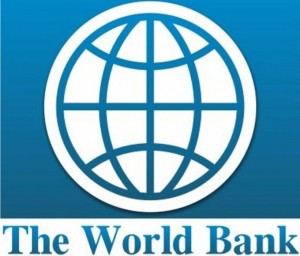Real GDP in sub-Saharan Africa forecast to grow by 2.9% in 2017
 The real Gross Domestic Product (GDP), in sub-Saharan Africa is forecast to grow by 2.9 per cent in 2017 barely above population growth, according to the Global Economic Prospects report 2017.
The real Gross Domestic Product (GDP), in sub-Saharan Africa is forecast to grow by 2.9 per cent in 2017 barely above population growth, according to the Global Economic Prospects report 2017.
The report released by the World Bank Group stated that recovery is moderate because the region continues to adjust to lower commodity prices and although rising through the medium term, commodity prices will remain well below their post-global-crisis averages.
Growth rates will continue to vary widely across the region, with growth in South Africa and oil exporters weaker than in metals exporters, and growth in non-intensive resource countries remaining robust, it said.
Private consumption growth in South Africa and oil exporters is expected to improve only gradually. In South Africa, inflationary pressures and high unemployment will weigh on consumer spending.
In Nigeria, ongoing exchange rate adjustment, coupled with the gradual improvement in oil prices, will provide a modest boost to domestic revenues. This, in turn, should help the federal and state governments meet some of their financial obligations, including the clearance of salary arrears, the report said.
Meanwhile, stable currencies, lower inflation, and improved agricultural production should support robust consumer spending in agricultural exporters and commodity importers.
In Angola, high inflation and tight policy will continue to weigh on domestic demand. In other mineral exporters, the outlook is broadly favorable.
In Ghana, improving fiscal and external positions should help boost investor confidence, it said.
Post-Ebola recovery is expected to continue in Guinea, Liberia, and Sierra Leone, as rising commodity prices boost investment and exports, it adds.
In Mozambique, recent progress in developing the nascent energy sector will help boost investment in gas production.
The report says agriculture exporters (Côte d’Ivoire, Ethiopia, Kenya, Rwanda, Senegal, and Tanzania), large infrastructure development programmes will continue to support robust growth.
To finance these programmes, their governments continue to draw on public-private partnerships (Côte d’Ivoire, Rwanda), donor aid (Rwanda), and Chinese entities (Ethiopia, Tanzania), it added.
However, political fragility will exert a drag on growth in countries such as Burundi and The Gambia. Among commodity importers, Cape Verde, Mauritius, and the Seychelles are expected to expand at a moderate pace, as heightened uncertainty in Europe, their main export market, weighs on tourism, investment, and trade flows..
It further notes that regional trade and infrastructure investment will help support a gradual increase in growth in Lesotho and Swaziland and electricity shortages and weak investment will continue to affect growth in the Comoros.
By Pamela Ofori-Boateng
Copyright ©2017 by Creative Imaginations Publicity
All rights reserved. This news item or any portion thereof may not be reproduced or used in any manner whatsoever without the express written permission of the publisher except for the use of brief quotations in reviews.
